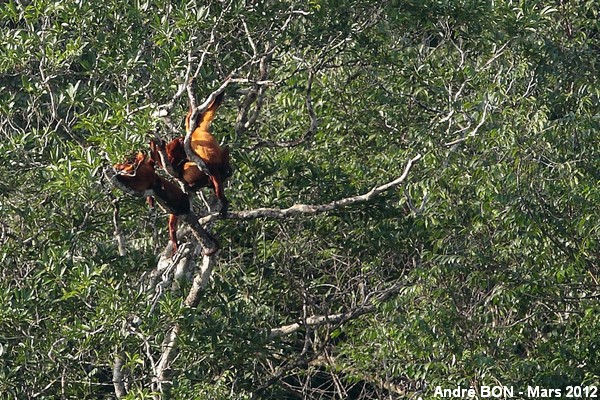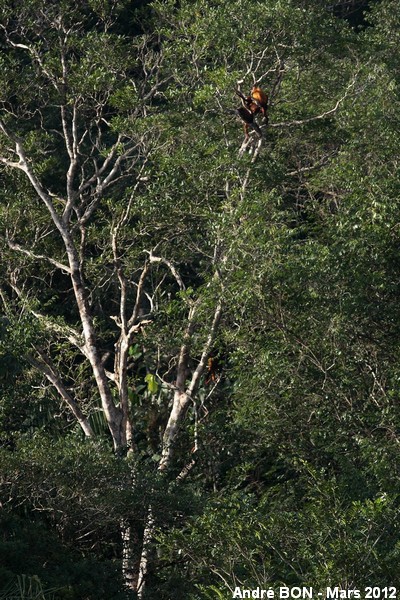

| Guyanan Red Howler (Alouatta macconnelli (Linnaeus, 1766)) |


|
|
Scientific name: Alouatta macconnelli (Linnaeus, 1766) Common name: Guyanan Red Howler Other names: Red Howler previously grouped in the Alouatta seniculus species are now split into several species. Alouatta seniculus is observed in the north-west of South America, Alouatta macconnelli is observed in the north-east of South America. French name: Hurleur roux Family: Atelidae Size: Body length including head: 44 to 70 cm; Tail length: 58 to 72 cm; Weight: 3.9 to 10 kg; Males are larger than females. Biotope: Tropical forests. Food: Mainly leaves but also some fruits, seeds, flowers and small animals. Longevity : 7 years for males, 11 to 12 years for females. Geographic area: North-east of South America: Suriname, Guyana, Trinidad, French Guiana and Brazil. |
Guyanan Red Howlers have a flaming red pelage that slightly varies with age. Juveniles are darker. Adult males have a paler back and a longer beard. The face is black and hairless. The long tail is prehensile and does not have any hair on the inner side. The common name of this species comes from its roaring and howling calls which can be heard up to 3 km away. This is because of the hyoid bone, located under the neck, which acts as a resonance box. Guyanan Red Howlers live in groups of 3 to 7 individuals, led by a dominant male. |
| [To know more about the Guyanan Red Howler] [Next picture] [Top] |

|
I have shot this picture during a boat tour in the marshes of Caw. We could have missed this group of Guyanan red Howlers if our guide hadn't showed it to us. This observation was done at a great distance and this picture is a very very important crop. |
| [To know more about the Guyanan Red Howler] [Previous picture] [Top] |

|
This picture better shows what we have seen. |